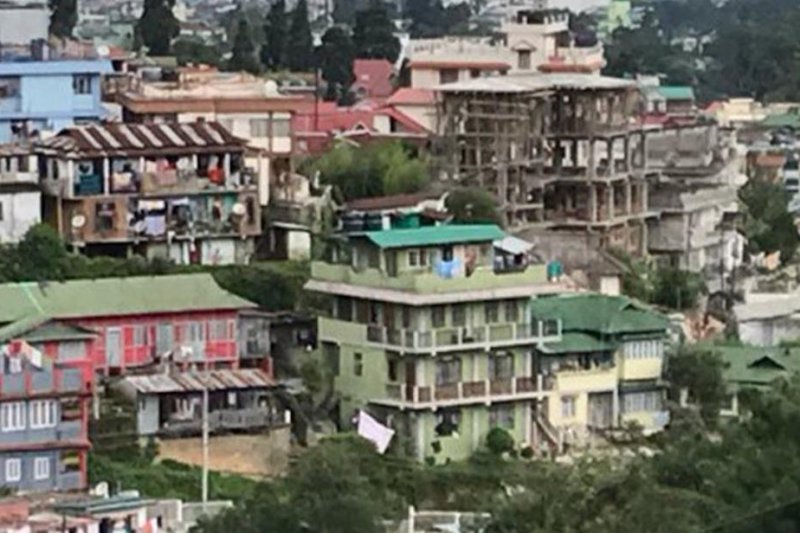As the surrounding countryside dries out, moderately vegetated cities like Shillong, in northeastern India, can experience daytime cooling while rural fields bake in the sun. Photo by Purdue University
Oct. 26 (UPI) -- Until now, scientists thought city temperatures knew just one direction -- up. Many studies have documented what's known as the heat island effect, but new research shows some cities, especially in India, benefit from an urban cooling phenomenon.
Usually suburban and rural land, with more vegetation, experience more cooling than cities, where concrete buildings and paved roads bake in the sun and encourage rising temperatures. Scientists have worried that residents of cities -- the majority of the world's population -- will experience global warming more dramatically than their suburban and rural peers.
But new research shows 60 percent of cities in India experience a cooling effect during the daytime. According to a new paper on the subject -- published this week in the journal Scientific Reports -- the cooling effect is explained by a lack of vegetation and moisture in the areas surrounding many of India's cities.
"When the areas around cities are running low on water and they aren't being irrigated, they turn into hot, dry, barren fields," Matthew Huber, a professor of earth, atmospheric and planetary sciences at Purdue University, said in a news release. "When that happens, there's actually more water available to evaporate in the cities than the surrounding countryside. It's like the cities are sweating."
Huber and his colleagues used daily temperature measurements in dozens of Indian cities, as well as temperature data from surrounding farmland, to build a model of urban heating and cooling. They used climate models to determine the impact of irrigation on local temperature patterns.
Their simulations showed agricultural irrigation is the main driver of moisture availability on lands surrounding cities. When irrigation is curtailed, less moisture is available on rural farmland than in the city. As such, rural inhabitants are likely to experience the effects of heat waves more dramatically than those in the city.
The research showed that both cities and their unirrigated rural neighbors experience nighttime heating. And Huber suggests the daytime cooling effect experienced in many Indian cities may not last.
"As conditions warm, it's more likely that this effect would go away rather than intensify," he said. "On the other hand, this shows that green infrastructure could be really effective at cooling cities."
Watering plants in the city could further rob the countryside of water, leaving them baking in the sun. Centuries of agricultural expansion has left many of India's water resources depleted and dried out much of the subcontinent, leading to significant desertification.
The latest research is a reminder of the balancing act policy makers will face as they work to protect different populations from the consequences of climate change.
"Are you going to impoverish the countryside and leave those areas barren, and the cities lush?" Huber said. "These are the kinds of questions we're asking: what are the tradeoffs?"















